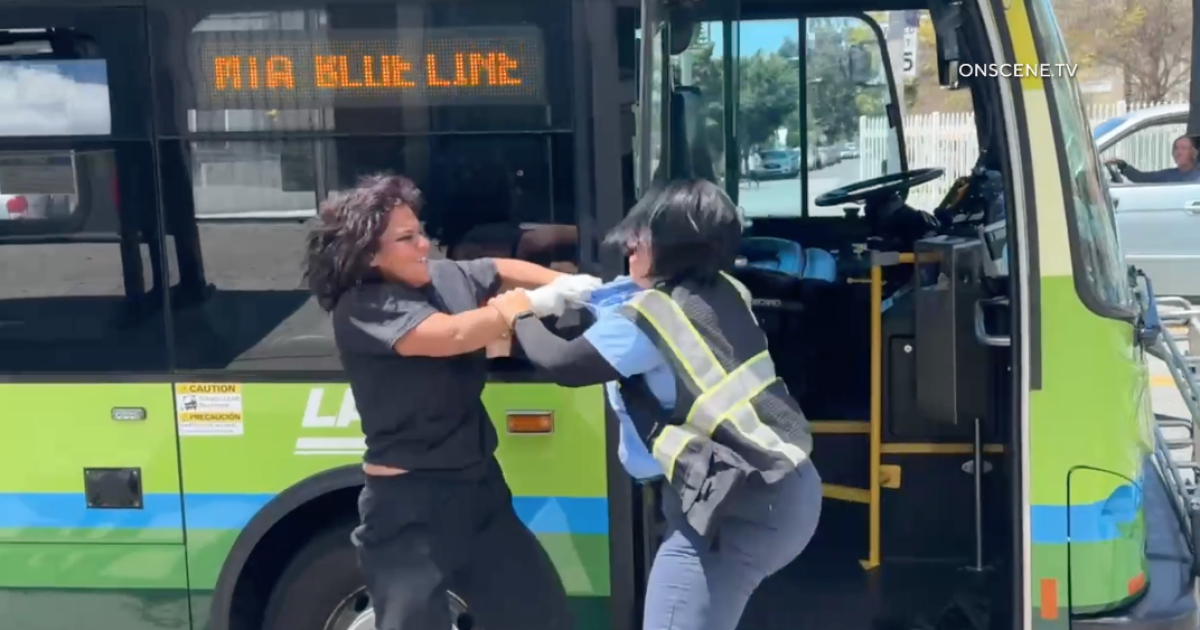Panic buttons on some Los Angeles shuttle buses don’t reach anyone, plexiglass shields around drivers aren’t meant to protect against physical attacks, and officials with the union that represents drivers say other safety measures touted to protect them don’t work.
“There has to be something more to it,” said Lourdes Garcia, secretary-treasurer and general secretary of the union that represents the city’s DASH shuttle drivers, Teamsters Local 572. “It’s time for an honest admission of what’s going on.”
The series of violent attacks has raised concerns about the safety of bus drivers, and the Los Angeles County Metropolitan Transportation Authority has declared a state of emergency over the attacks.
At a June 5 meeting of the Los Angeles City Council Transportation Committee, Los Angeles Department of Transportation officials recommended measures to keep drivers safe, including panic buttons on DASH buses, plexiglass around drivers, training, video cameras and radios.
But drivers and union officials say many of the safety features are ineffective. For example, a panic button that drivers can press doesn’t connect to a dispatch center or emergency services. Instead, pressing the button plays a recording instructing passengers or others to call 911.
“It’s like honking your horn,” Garcia said. “You just hope that somebody, a good Samaritan, hears it. If you’re on the highway, maybe no one will hear it.”
Concerns have been raised over the safety of bus drivers following several reported incidents of assaults against them, some of which were recorded on video.
In the May 5 incident, a female passenger attacked a Metrobus driver at the intersection of Central Avenue and Jefferson Boulevard.
The woman is seen pushing and punching the female driver, who then kicks her in an attempt to drive her away.
In March, a passenger armed with an airsoft gun hijacked a Metro bus and crashed it into several cars and the Ritz-Carlton hotel in downtown Los Angeles.
In April, another subway driver was stabbed in Willowbrook in an incident that was captured on video. During the attack, the driver can be heard yelling, “Help! Help!”
Safety concerns led to hundreds of drivers calling in sick in May and caused delays to dozens of Metro bus routes.
While much of the attention has been focused on Metro buses, officials have also raised concerns about what safety measures are being put in place for drivers of DASH, a free shuttle service that operates in 27 neighborhoods, including downtown Los Angeles. DASH buses are connected to the county’s Metro transit system.
The Los Angeles Police Department continued to patrol DASH buses until its contract with the department expires in 2021. Officials said there were plans to replace the buses with safety ambassadors but those plans were never followed through.
Adriana Avila, president of Teamsters 572, told the city’s transportation committee that drivers have complained about a lack of safety training and that bus radios aren’t working in some areas of the city.
She said at the Jan. 5 meeting that some radios don’t work at all.
Officials pointed out that the plexiglass surrounding the driver was installed as a precaution against the COVID-19 virus, not to stop rowdy passengers.
“When I go out there, I’m on my own,” Garcia said.
LADOT, which oversees DASH buses, is currently working to resolve the wireless issues, a spokesman said.
“The safety of our bus drivers and passengers is a top priority for LADOT,” agency spokesman Collin Sweeney said in an email. “Drivers have reported connectivity issues in certain areas of the city, including hills and valleys, so LADOT is currently investigating technical solutions to maintain constant communication with moving vehicles.”
Sweeney added that buses undergo pre-departure inspections before each shift to ensure drivers are in contact with dispatch and that panic buttons are working.
But that’s not enough, Councilwoman Tracy Park, vice chair of the city’s transportation committee, said at the June 5 meeting.
“We are removing our law enforcement partners from transportation; [the Department of Transportation’s] “There has been no replacement for this other than ambassadors and plexiglass that leads nowhere and panic buttons,” Park said. “Passengers and drivers feel left defenseless and left to fend for themselves. Walkie-talkies, panic buttons and plexiglass everywhere just aren’t enough.”
City officials said they were discussing with the LAPD, the Los Angeles Department of Transportation and union officials the plan to schedule de-escalation training for drivers and consider safety measures that could be implemented to protect them.
Garcia said union officials and drivers are encouraged that the Los Angeles Department of Transportation and City Council are paying more attention to driver safety and incidents of violence on board, but noted that many of the concerns being addressed were voiced by drivers months ago.
“We’ve been saying this for a long time,” she said. “They’re finally feeling the urgency to address this issue, and we welcome that.”

